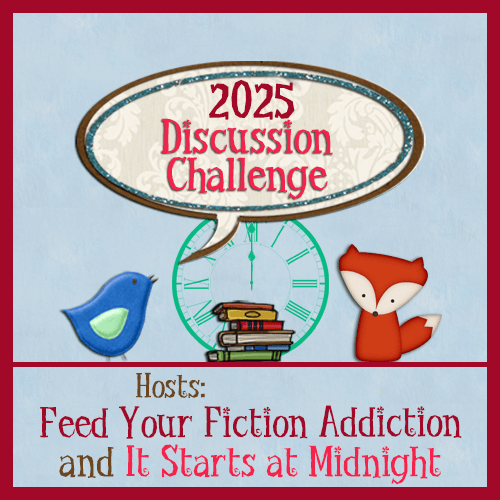Thanks to these two bloggers for sponsoring the annual Blog Discussion Challenge:
- Nicole at Feed Your Fiction Addiction
- Shannon at It Starts at Midnight

I started Notes in the Margin in 1996. In those heady first days of the World Wide Web, the concept of blogging did not yet exist. What my contemporaries and I were doing then was simply called “having a Web site.” Since then, Web has lost its capitalization, and website has become a single word. And blogs, shortened from Weblogs, have become ubiquitous.
Much has changed over the last almost 30 years. As blogging programs and platforms came and went, frequently replaced by new, shinier products, I lost a lot of my earliest content in the repeated turnovers. The evolution from websites into blogs dramatically changed how content is structured and presented. I recently started looking over my early content with an eye toward sprucing up the blog. I discovered that I no longer have much consistent content until about 2010.
To see how “having a Web site” has developed over the years, I offer a new occasional feature, 15 Years Ago on Notes in the Margin.
For the first installment of this undertaking, I focus on this post from May 29, 2010:
Fictive Worlds and Real Brains: The Psychology of Reading
This extended discussion of several articles I had read online is from the year before I received my doctorate in psychology. One of the areas I studied was the psychology of reading. The mini-essay format reflects my academic focus of the time.
The mini-essay format probably also reflects my understanding of what was happening on the web at the time. When I started Notes in the Margin in the pre-blog era, I structured the site as a resource about novelists and their novels. Each author had a separate page with biographical information and a publications list. I added reviews of each book as I read it to that page.
When blogs were born, I added one to the site and used it to discuss literature-related topics such as the psychology of reading. Apparently this post is from the time when Notes in the Margin was in the hybrid state of structured site + blog.
This old post also illustrates another feature of the early web days: the uncertainly of how long anything published online would remain in existence and readily accessible. As a good academic, when I wrote this post I was careful to quote passages from my sources that supported my argument. But in the back of my mind I knew, even then, that those sources might not always exist at the same web address (URL) and I’d better quote what I needed.
And it came to pass that what we all feared back them has indeed occurred. The link to Raymond Tallis’s article “The Neuroscience Delusion” no longer works; however, I found a PDF version available online here.
Also, the link to John Horgan’s Scientific American post “Can Brain Scans Help Us Understand Homer?” no longer works. The original link now returns the dreaded “404 Page Not Found” message. That page directs me to the magazine’s archives page, where I can browse for an article from a specific issue. However, Horgan’s piece was from Scientific American’s blog, and the blog content was not included in the print magazine.
However, I’m happy to report that an extensive internet search did finally yield a replacement link. I first searched for the full article title + John Horgan. Even though John Horgan maintains a robust internet presence, I could not find what I was looking for there. I finally searched for “John Horgan Scientific American,” which lead me to a page, apparently offered by Scientific American, of all the articles Horgan has written for the company. By paging backwards quite a ways (as with most internet material, the most recent entries appear first), I finally found “Can Brain Scans Help Us Understand Homer?”.
My experience with Scientific American characterizes how established print media handled the advent of online publication. Should they adopt an online presence? If so, should they consider online content as separate from printed content, or should they combine the two? And if they chose to combine them, how would that work?
In this case, the blog was originally conceptualized as a separate entity from the magazine. Apparently, the company later decided to incorporate the magazine and the blog under an online umbrella and had to reconfigure the online presence by adding links to the blog material. But they sure didn’t make their old blog pieces easy to find under their new system of organization. I had to go outside Scientific American’s own site and play around with several search combinations to find what I was looking for.
This whole process has both frustrated and entertained me. It’s taught me to think about web publication, particularly how to make information easy to find on my own website. It has also taught me to think creatively and to persist when searching for information online. I’m curious to see how the focus and structure of entries has changed over time as I continue to look back at what appeared on Notes in the Margin 15 years ago.
© 2025 by Mary Daniels Brown

